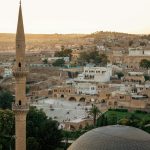The principal holiday resort of the Mediterranean is the lovely region of Antalya with a majestic coastline of beaches and rocky coves where the towering Toros (Taurus) Mountains provide a magnificent backdrop. Antalya is an attractive city, at an altitude of only about 50 metres, with shady, palm-lined boulevards, a prize-winning marina and a picturesque old quarter called Kaleici which has narrow, winding streets and quaint, old, wooden houses next to the city walls. Since its founding in the 2nd century B.C. by Attalus II, a king of Pergamon who named the city Attaleia after himself, it has had a continuous history. The Romans, Byzantines and Seljuks occupied the city before it came under Ottoman rule. Historical Sites And Monuments In Antalya Ancient City Walls: Since its founding in the 2nd century B.C., Antalya has had a continuous history. The ancient walls flank the city and other sections of the walls are still standing near the marina.
Clock Tower: Situated by the ancient city walls, it was part of the old city fortifications in the Kalekapisi Square.
Hadrian’s Gate: The beautifully decorated, three-arched gate was built in honour of Hadrian when he visited the city in 130 A.D.
Hidirlik Tower: This tower was probably first built as a lighthouse in the 2nd century.
Karatay Medrese: This theological school dates from the 13th century and is situated in the Kaleici neighbourhood. The stone carvings on the portal and mihrap (prayer niche) are fine examples of Seljuk art.
Ataturk Monuments: One of the largest and most interesting monuments is located in Cumhuriyet Square within the city centre. The other one is in the center of Vatan Square.
Kaleici Quarter: This quaint area surrounding the Kaleici Marina is full of small hotels, pensions and restaurants as well as restored houses that all help to create the atmosphere for which the city is famous.
Recent Packages
2012 - 2024 © Anas Crecca Travel, All rights reserved.




